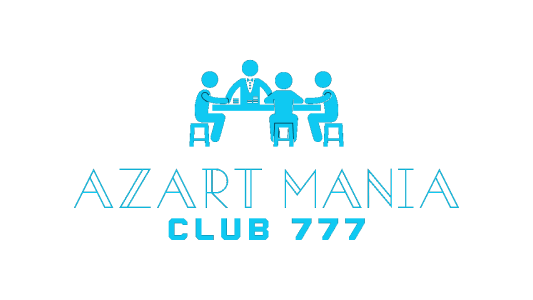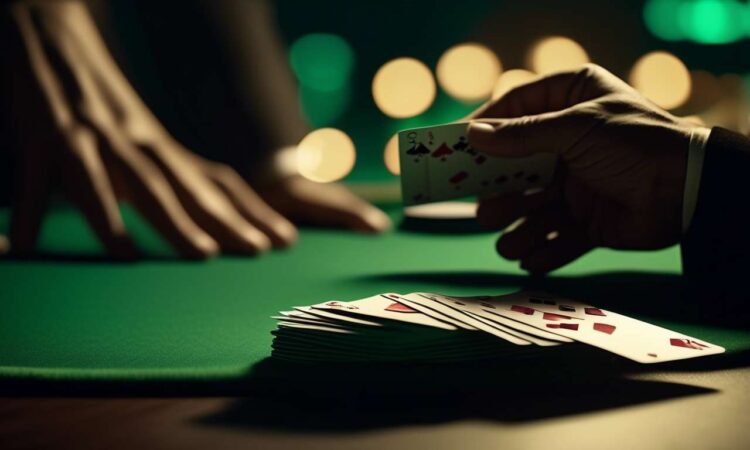When we first set foot into the vibrant world of blackjack, we were captivated by the blend of strategy and chance that this classic card game offers. As beginners, we were eager to unravel the mysteries of blackjack and learn how to tip the odds in our favor.
The key to unlocking this potential lies in mastering the basic strategy, a tried-and-true method that guides our decisions at every turn of the card. Together, we embarked on a journey to understand the fundamental principles that would transform us from novices into skilled players.
In this article, we will explore the essential elements of blackjack basic strategy, breaking down the complex decisions into simple, manageable steps. We aim to equip ourselves—and you—with the knowledge needed to approach each game with confidence and clarity.
Let’s dive into the world of blackjack and discover how we can master this strategy together.
Understanding the Basics of Blackjack
Mastering Blackjack
To master blackjack, we first need to grasp its basic rules and objectives. Blackjack is a game where the aim is to beat the dealer by having a hand value closer to 21 without exceeding it. Each card has a specific point value:
- Numbered cards are worth their face value
- Face cards are worth 10
- Aces can be 1 or 11
With a welcoming community of players, we can all find a sense of belonging as we dive into the intricacies of this classic card game.
Understanding Blackjack Basic Strategy
In our journey to become proficient, understanding the blackjack basic strategy is crucial. This strategy guides us on when to:
- Hit
- Stand
- Double down
- Split
By adhering to this strategy, we make informed decisions based on the dealer’s visible card and our hand.
Let’s embrace the collective experience of learning and mastering these fundamentals, knowing we’re not alone in our pursuit of becoming skilled blackjack players.
Importance of Basic Strategy
A solid grasp of basic strategy significantly boosts our chances of winning by guiding our decisions in various game scenarios. When we play blackjack, it’s crucial to understand that sticking to a well-defined plan isn’t just smart; it’s essential.
Blackjack basic strategy helps us make the best possible moves, reducing the house edge and increasing our sense of control at the table. By using this strategy, we’re not just hoping for good cards; we’re actively making choices that align with statistical probabilities.
It’s about more than just playing a game—it’s about being part of a community of informed players who share a common goal: winning. Together, we:
- Study
- Learn
- Refine our skills
This creates a shared experience that fosters camaraderie and mutual success.
In our collective journey, mastering basic strategy becomes a badge of honor. It sets us apart, showing that we’re serious about our game and committed to growing as knowledgeable and strategic players.
Key Principles to Follow
To truly excel at blackjack, we must adhere to a few fundamental principles that guide our decisions and enhance our strategic gameplay.
1. Master the Blackjack Basic Strategy Chart
- This chart is our roadmap, showing us when to hit, stand, double down, or split.
- By following it, we reduce the house edge significantly.
- Though it may seem overwhelming at first, with practice, we’ll master it.
2. Maintain Discipline
- It’s tempting to deviate when luck seems on our side, but sticking to the strategy ensures long-term success.
- Focus on the cards in play, not the ones that have already been dealt.
- This keeps us aligned with the probabilities that the blackjack basic strategy relies on.
3. Stay Mindful of Our Bankroll
- Setting a budget helps us play responsibly and enjoy the game without unnecessary stress.
By embracing these principles, we’ll find our place at the blackjack table and play confidently as a united front.
Hard Hands Strategy
Understanding Hard Hands in Blackjack
In blackjack basic strategy, a hard hand is one without an ace, or with an ace that counts only as 1. Effectively playing these hands is crucial for optimizing your chances of winning. Careful consideration and community support are key as we navigate decisions together at the table.
Primary Goals
Our primary goal is to:
- Avoid busting
- Push towards 21
Strategies for Hard Hands
-
Hard Hand Totaling 12 to 16:
- Dealer’s Upcard 7 or Higher:
- Hit to improve your total.
- Dealer’s Upcard 2 to 6:
- Stand, banking on the dealer potentially busting.
- Dealer’s Upcard 7 or Higher:
-
Hard Hand Totaling 17 or More:
- Stick with it, as the risk of busting increases significantly.
Embrace Shared Strategies
By embracing these strategies, we enhance our mastery in the vibrant world of blackjack. These guidelines will help us make informed decisions and increase our chances of success at the table.
Soft Hands Strategy
When dealing with soft hands in blackjack, we should leverage the ace’s flexibility to maximize our winning potential. Soft hands include any hand with an ace valued as 11, giving us a chance to adjust our strategy.
For instance, with a soft 17 (an ace and a six), according to blackjack basic strategy, we often hit against a dealer’s strong upcard, like a 9 or 10. By doing so, we keep our options open, since the ace can revert to 1 without busting our hand.
Soft hands empower us to be more aggressive without the fear of going over 21. This flexibility lets us connect with fellow players who also embrace strategic thinking and calculated risks.
- If we hold a soft 18:
- Standing might be wise against a dealer’s weak card.
- Hitting could be beneficial against stronger dealer hands.
By mastering these nuances, we’re not just playing blackjack; we’re joining a community of strategic thinkers.
Pair Splitting Strategy
Pair Splitting in Blackjack
Pair splitting is a powerful strategy that allows us to maximize our winnings by turning one hand into two, increasing our chances of beating the dealer. In the world of blackjack basic strategy, knowing when to split pairs gives us a sense of control and camaraderie at the table. We’re not just playing cards; we’re making strategic decisions together that can tilt the odds in our favor.
Assessing the Dealer’s Upcard
When we’re dealt a pair, it’s crucial to assess the dealer’s upcard. Splitting pairs like aces or eights can transform a potentially weak hand into two strong ones.
- Aces: We’re aiming for those elusive tens.
- Eights: Helps us avoid the dreaded 16, a notorious bust trap.
Pairs Not to Split
However, we should resist splitting:
- Tens: Already a strong hand.
- Fives: Offer better potential as a ten.
By mastering this aspect of blackjack basic strategy, we’re not just playing; we’re joining a community of strategic thinkers who understand the game’s nuances.
Doubling Down Tactics
Doubling down is one of the most exhilarating moves in blackjack, offering us the chance to double our bet in favorable situations for a potentially greater reward. By mastering this tactic, we feel a sense of camaraderie with fellow players as we share in the thrill of taking calculated risks together.
Within the framework of blackjack basic strategy, doubling down can significantly enhance our gameplay when used wisely. Here are some key scenarios when doubling down is advisable:
- Double down when your initial hand totals 10 or 11, and the dealer shows a weaker card, like those ranging from 2 to 6. This scenario gives us a strategic edge, as the likelihood of the dealer busting increases.
- Some tables permit doubling down on a soft 16 through 18 when facing a dealer’s low card.
Embracing these tactics not only aligns us with seasoned players but also empowers us to make confident decisions. By integrating doubling down into our strategy, we solidify our place at the table, ready to celebrate shared victories.
Practical Tips for Beginners
For beginners looking to master blackjack, a few practical tips can make a world of difference in understanding and enhancing gameplay.
1. Learn the Blackjack Basic Strategy:
- Commit to learning the basic strategy, which acts as a roadmap for the game.
- Memorize the strategy chart to increase your odds and build confidence at the table.
2. Practice Regularly:
- Use online simulators to practice in a risk-free environment.
- Regular practice helps you become comfortable with the basic strategy and recognize gameplay patterns.
3. Manage Your Bankroll Wisely:
- Set limits to ensure responsible play.
- Responsible bankroll management allows continued enjoyment of the game.
4. Stay Focused:
- Avoid distractions to maintain concentration.
- Focus is crucial for making the best decisions.
Together, by following these steps, we can master blackjack and have fun doing it!
What are some common myths about blackjack that beginners should be aware of?
Common Myths in Blackjack
Understanding the game of blackjack involves more than just luck. Here are some common myths that beginners should be aware of:
-
Luck Alone Guarantees Wins
- It is a myth that relying solely on luck will ensure victories in blackjack.
- Reality: Understanding the game’s strategies and probabilities is key to improving your chances of winning.
-
Card Counting is Illegal
- Many believe that card counting is against the law.
- Truth: Card counting is not illegal, but it is challenging and casinos may ban players suspected of using this technique.
-
Insurance Bets are Beneficial
- Some players think insurance bets are a good strategy.
- Fact: Insurance bets typically favor the house, making them generally a poor option for players.
Conclusion
Being aware of these myths can help you make more informed decisions at the blackjack table, enhancing your gaming strategy and experience.
How does card counting differ from basic strategy, and is it advisable for beginners to learn?
Card Counting and Basic Strategy in Blackjack
Card Counting:
Card counting involves keeping track of the cards that have been dealt to gain an advantage in blackjack. It requires a higher level of skill and concentration than basic strategy.
Basic Strategy:
Basic strategy is a set of rules designed to optimize your decisions in the game. For beginners, focusing on mastering basic strategy first is advisable.
- Foundation Building:
- Build a strong foundation and understanding of the game.
- Master basic strategy before attempting card counting.
By following these steps, players can enhance their skills progressively and prepare for more advanced techniques like card counting.
Are there any psychological aspects of playing blackjack that beginners should consider?
When starting out in blackjack, it’s essential to consider the psychological side of the game.
Awareness of Emotions:
- Being aware of our emotions and how they can impact our decisions is crucial.
- Emotions can cloud judgment and lead to poor decision-making.
Maintaining Focus:
- Stay focused and maintain a positive mindset, even when facing losses.
- Recognize when to take breaks to prevent emotional decisions.
Benefits:
- Understanding these psychological aspects can greatly improve our overall playing experience.
By acknowledging and managing these psychological elements, players can enhance their performance and enjoyment of the game.
Conclusion
Congratulations on mastering the basics of Blackjack basic strategy! By understanding the key principles and strategies, you are on your way to becoming a skilled player. Here are the main areas you should focus on:
-
Hard Hands
- Know when to hit or stand based on your total and the dealer’s upcard.
-
Soft Hands
- Recognize when to adjust your play since you cannot bust with an Ace counted as 11.
-
Pair Splitting
- Understand which pairs to split and when, depending on the dealer’s upcard.
-
Doubling Down
- Identify optimal situations to double your bet for a potentially higher reward.
Practice and application of these tactics are crucial to improving your chances of winning at the Blackjack table.
Good luck, and enjoy the thrill of the game!

